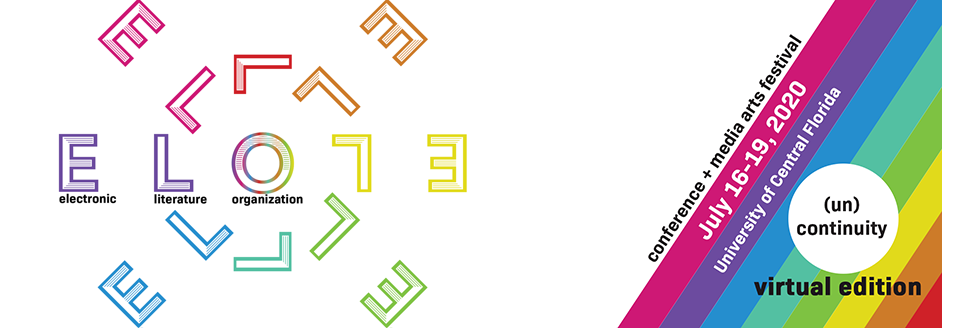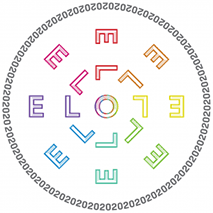Loading...
Submission Type
Conference Proceedings Paper
Abstract
In ‘The Aesthetic of Bookishness in Twenty-first Century Literature’, Jessica Pressman (2009) proposes that the aesthetic of ‘bookishness’ is as old as the book form. The Tale of Genji (源氏物語) by Murasaki Shikibu is often considered the world’s first modern novel. The text is presented as an ‘orihon’ (折本): a ‘long strip of paper that is pleated into a stack, with a cover pasted at each end of the stack’ (Atwood, 10). ‘Orihon’ is a combination of the Japanese word for ‘fold’ (折) and ‘book’ or ‘source’ (本). The orihon is often also referred to as an ‘accordion’ book.
Digital poet and software developer Benjamin Laird’s Psychometric Researches (2019) was written ‘in response to an 1863 copy of Nature’s Secrets or Psychometric Researches by William and Elizabeth Denton.’ The digital poem is presented as a cube, across three dimensions. The work can be presented digitally, allowing for vertical and horizontal rotational functionality. This enables the reader to interpret the text as it flows and jars with adjacent faces. The work also allows the reader to print out a copy of the poem as a net, so that they can cut out and fold their own cube.
From Murasaki’s folded scroll in the early 11th century, to Laird’s folded box in 2019, there is a(n) (un)continuity of a folded form. The move from scroll to book through folding was a dramatic shift that enabled the novel to flourish. In this paper, I propose that the folding possibilities afforded by digital technologies will further expand the novel. As creative practice, I intend to create a three-dimensional, folded, digital form of my print novella, The Perfect Democracy. Such developments are not necessarily dependent on digital technologies, but are requisite for its distribution given the expense associated with paper publishing. Pressman (2009) writes that there is:
something different about this aesthetic as it appears in works of twenty-first-century fiction. This focus on the book and the aesthetics it promotes is not merely another form of postmodern reflexivity…. There is a decisively different tone and ambition at work in the novels of our moment.
This ‘decisively different tone’, I argue, is a result of authoritative and aesthetic concerns that have arisen in the late 20thcentury and early 21st century novel. These concerns, I propose, can be resolved, or at least better mitigated, in digital, folded novel formats.
WORKS CITED
Atwood, C. (1987) “Japanese Folded Sheet Books: Construction, Materials and Conservation”, The Paper Conservator, 11:1, pp.10–21.
Laird, B. (2019) “Psychometric Researches”, Poetry Object, Red Room Poetry. https://redroomcompany.org/poem/benjamin-laird/psychometric-researches/ [Accessed 1 December, 2019].
Murasaki, S. (1960) [trans: Waley, A.] The tale of Genji: a novel in six parts by lady Murasaki. New York: Modern Library.
Pressman, J. (2009) “THE AESTHETIC OF BOOKISHNESS IN TWENTY-FIRST-CENTURY LITERATURE”, Michigan Quarterly Review, 48:4, pp.465.
Digital Orihon (デジタル折り本): The (un)continuous shape of the novel.
In ‘The Aesthetic of Bookishness in Twenty-first Century Literature’, Jessica Pressman (2009) proposes that the aesthetic of ‘bookishness’ is as old as the book form. The Tale of Genji (源氏物語) by Murasaki Shikibu is often considered the world’s first modern novel. The text is presented as an ‘orihon’ (折本): a ‘long strip of paper that is pleated into a stack, with a cover pasted at each end of the stack’ (Atwood, 10). ‘Orihon’ is a combination of the Japanese word for ‘fold’ (折) and ‘book’ or ‘source’ (本). The orihon is often also referred to as an ‘accordion’ book.
Digital poet and software developer Benjamin Laird’s Psychometric Researches (2019) was written ‘in response to an 1863 copy of Nature’s Secrets or Psychometric Researches by William and Elizabeth Denton.’ The digital poem is presented as a cube, across three dimensions. The work can be presented digitally, allowing for vertical and horizontal rotational functionality. This enables the reader to interpret the text as it flows and jars with adjacent faces. The work also allows the reader to print out a copy of the poem as a net, so that they can cut out and fold their own cube.
From Murasaki’s folded scroll in the early 11th century, to Laird’s folded box in 2019, there is a(n) (un)continuity of a folded form. The move from scroll to book through folding was a dramatic shift that enabled the novel to flourish. In this paper, I propose that the folding possibilities afforded by digital technologies will further expand the novel. As creative practice, I intend to create a three-dimensional, folded, digital form of my print novella, The Perfect Democracy. Such developments are not necessarily dependent on digital technologies, but are requisite for its distribution given the expense associated with paper publishing. Pressman (2009) writes that there is:
something different about this aesthetic as it appears in works of twenty-first-century fiction. This focus on the book and the aesthetics it promotes is not merely another form of postmodern reflexivity…. There is a decisively different tone and ambition at work in the novels of our moment.
This ‘decisively different tone’, I argue, is a result of authoritative and aesthetic concerns that have arisen in the late 20thcentury and early 21st century novel. These concerns, I propose, can be resolved, or at least better mitigated, in digital, folded novel formats.
WORKS CITED
Atwood, C. (1987) “Japanese Folded Sheet Books: Construction, Materials and Conservation”, The Paper Conservator, 11:1, pp.10–21.
Laird, B. (2019) “Psychometric Researches”, Poetry Object, Red Room Poetry. https://redroomcompany.org/poem/benjamin-laird/psychometric-researches/ [Accessed 1 December, 2019].
Murasaki, S. (1960) [trans: Waley, A.] The tale of Genji: a novel in six parts by lady Murasaki. New York: Modern Library.
Pressman, J. (2009) “THE AESTHETIC OF BOOKISHNESS IN TWENTY-FIRST-CENTURY LITERATURE”, Michigan Quarterly Review, 48:4, pp.465.




Bio
David Thomas Henry Wright won the 2018 Queensland Literary Awards’ Digital Literature Prize and 2019 Robert Coover Award for a work of Electronic Literature (2nd prize). He has been shortlisted for several other awards, and published in various journals. He has a PhD from Murdoch University and a Masters from The University of Edinburgh. He is currently co-editor of The Digital Review and Associate Professor (Comparative Literature) at Nagoya University.